5 Front Yard Landscaping Ideas to Elevate Curb Appeal in Johnson County

Is your front yard living up to its potential?
In Johnson County, where neighborhoods are full of beautiful homes and well-kept properties, your front yard has a lot to live up to. But if your landscaping feels outdated, sparse, or just uninspired, it can quietly drag down your home’s overall appearance, no matter how polished the rest of it is. You may find yourself wondering why your yard doesn’t reflect the same warmth or personality you’ve worked so hard to create indoors.
And the truth is, that nagging feeling doesn’t go away. Every time you pull into the driveway or glance out the window, you’re reminded of what could be—but isn’t. It’s disheartening to feel like your home’s exterior is sending the wrong message. Even worse? That quiet insecurity when guests arrive or neighbors pass by.
The good news is, you don’t need to start from scratch. In this post, we’ll share five front yard landscaping ideas that can breathe new life into your outdoor space—practical, beautiful, and perfectly suited for homes in Johnson County.
The Role of Front Yard Landscaping in Curb Appeal
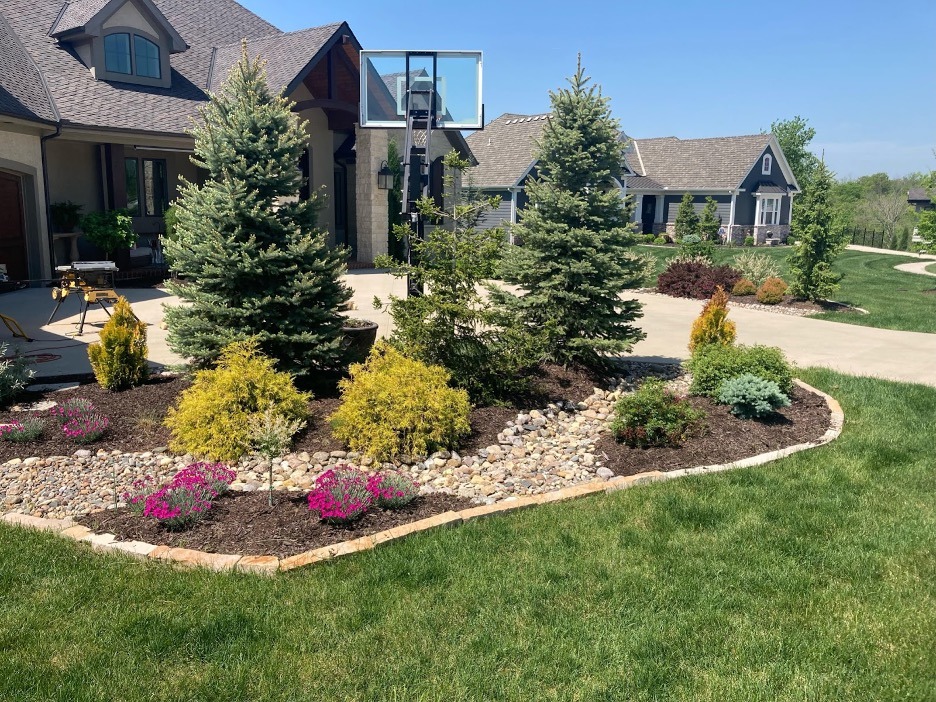
In residential communities like Johnson County, curb appeal is more than a real estate buzzword—it’s a reflection of care, character, and neighborhood pride. Your front yard serves as the visual gateway to your home, influencing how others perceive your property before they ever step inside. A thoughtfully designed landscape can transform that impression from neutral to unforgettable, instantly signaling that the home is cared for, well-maintained, and full of personality.
Beyond aesthetics, front yard landscaping plays a practical role in the livability of your property. A smart design can improve drainage, reduce lawn maintenance, and help regulate soil health and erosion. It can also increase energy efficiency—strategic planting around windows or entryways can provide shade in summer and insulation in winter. For homeowners in Johnson County, where the climate includes hot summers, cold winters, and everything in between, landscape choices must be both beautiful and resilient.
Well-designed outdoor spaces also promote better use of your yard. A thoughtful layout can create natural flow from the street to your front door, define welcoming zones for guests, and provide space to add seating, lighting, or even wildlife-friendly gardens. In an era where more people are investing in home comfort and outdoor living, a visually appealing front yard isn’t a luxury—it’s an extension of how you live.
There’s also a deeper, more personal element to great landscaping. Your front yard is part of your daily life—the view you see when you leave for work, come home after a long day, or welcome friends and family to your doorstep. It has the power to uplift, ground, and reconnect you with nature. Seasonal blooms, native grasses, a winding path—each design element tells a story about who lives there and what they value.
Whether you’re planning a subtle refresh or dreaming of a full redesign, understanding the impact of front yard landscaping helps guide better decisions. The following ideas are tailored to Johnson County homes and designed to help you boost curb appeal, add meaningful function, and create a front yard that feels purposeful, polished, and uniquely yours.
Johnson County Landscaping: 5 Front Yard Ideas That Improve Curb Appeal

Front yard landscaping in Johnson County isn’t just about aesthetics—it’s about adapting to the region’s unique climate, soil conditions, and seasonal shifts. From hot, humid summers to unpredictable winters, the Midwest demands a thoughtful approach to design that balances beauty with durability. Homeowners here aren’t just planting for looks—they’re planning for long-term success in a landscape that needs to be both practical and resilient.
That’s why the most effective front yard updates consider more than just trends. They reflect the natural environment, the character of the home, and the lifestyle of the people who live there. Whether you’re working with a small entry garden or a sprawling front lawn, strategic landscaping can create visual harmony, reduce maintenance, and even support native wildlife. The following ideas are designed with all of this in mind—grounded in local insight and crafted to bring out the best in your home’s exterior.
1. Garden Design Based On Native Plants
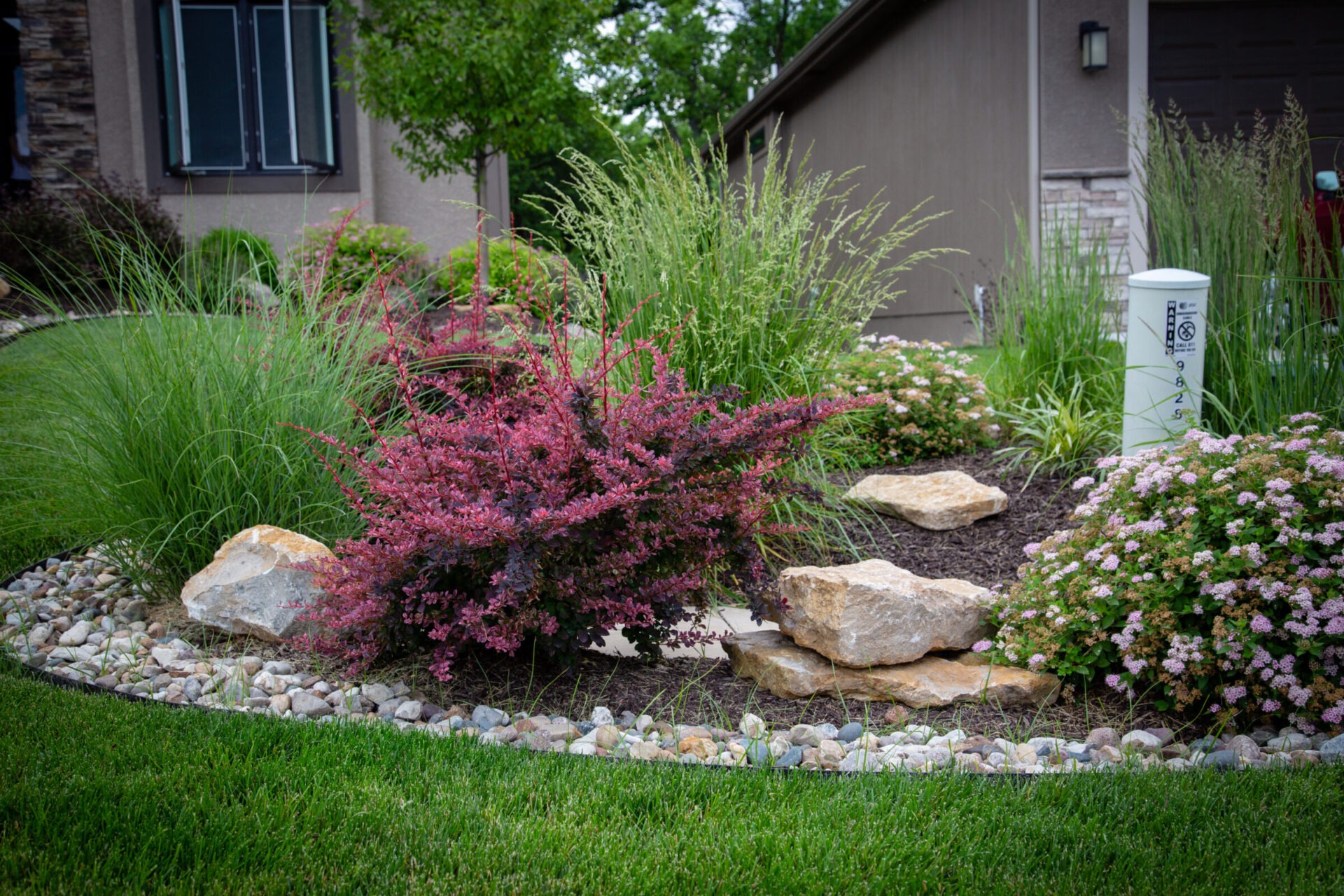
One of the most effective ways to create a stunning landscape design is to use native plants. These plants are naturally acclimated to the local climate, meaning they can thrive with less human intervention, which is both cost-effective and time-saving. Native plants are well-adapted to the local climate and soil conditions, making them low-maintenance and eco-friendly. They also tend to be more resilient to local pests and diseases, reducing the need for chemical treatments. In Johnson County, consider incorporating plants like coneflowers, black-eyed Susans, and switchgrass. These plants not only thrive in the area but also attract local wildlife such as butterflies and birds, adding life and movement to your garden. This creates a mini-ecosystem that contributes to the overall health of the environment. Many native plants also require fewer soil amendments and fertilizers, which further reduces environmental impact. Plus, their natural beauty often blends seamlessly with the surrounding landscape, giving your yard a cohesive and organic look.
Benefits of Native Plants
-
- Low Maintenance: Once established, native plants require minimal watering and care. This can also help in reducing the amount of water needed and free up more time for you to enjoy your garden rather than working in it.
-
- Eco-Friendly: They support local ecosystems and reduce the need for chemical fertilizers and pesticides. By choosing native plants, you’re helping to preserve the local biodiversity and encouraging a sustainable environment.
-
- Aesthetic Appeal: With a variety of colors and textures, native plants can add visual interest to any landscape design. The unique appearance of these plants can be a conversation starter and set your yard apart from others in the neighborhood.
2. Create a Welcoming Pathway

A well-designed pathway can guide visitors to your door and make your front yard feel more inviting. Pathways are more than just functional elements; they add structure and symmetry to your landscape, drawing the eye through the space in a natural way. Consider using materials such as pavers, brick, flagstones, natural steps, river rock, cobblestones, or boulders to create a path that complements your home’s architecture and color palette. These materials offer durability and a classic look that can withstand the test of time. Adding curves or angles can make the pathway more dynamic and interesting, transforming a simple walkway into an artistic element. You might also consider integrating seating areas or small garden nooks along the path to encourage people to linger and enjoy the space. Using a mix of textures in your materials, like pairing smooth stones with rough-cut pavers, can add depth and character to the design.
Tips for Designing Pathways
-
- Width Matters: Ensure the pathway is wide enough for two people to walk side by side. This not only adds to the pathway’s functionality but also enhances its visual appeal by making it appear more generous and accommodating.
-
- Lighting: Integrate solar-powered lights along the path to enhance safety and add ambiance in the evenings. This subtle lighting can create a warm and welcoming atmosphere while also improving visibility at night.
-
- Planting Borders: Use low-growing plants or flowers along the edges to soften the look and add color. This can create a seamless transition from the hardscape of the pathway to the softscape of the garden, giving your yard a cohesive look.
3. Add Outdoor Lighting

Outdoor lighting is a crucial component of any landscaping design. It not only enhances the beauty of your home at night but also improves safety and security. Well-placed lights can highlight the architectural features of your home, making it stand out even after dusk. In Johnson County, where the evenings are often spent outdoors, strategically placed lighting can make a significant difference. It allows you to extend your living space beyond the walls of your home, creating a welcoming environment for evening gatherings. Consider using timers or smart lighting systems to automate your outdoor lights for convenience and energy savings. Warm-toned lights tend to create a more inviting feel, while cooler tones can lend a sleek, modern look to your space.
Types of Outdoor Lighting
-
- Path Lights: Illuminate walkways and driveways to prevent accidents. These lights serve a practical purpose while also adding a decorative touch to your landscape.
-
- Accent Lights: Highlight architectural features or focal points in your landscaping. Use them to draw attention to a beautiful tree, a piece of garden art, or the texture of your home’s facade.
-
- String Lights: Perfect for creating a cozy, festive atmosphere during gatherings. These can be draped over trees or along fences to create a magical ambiance that invites relaxation and enjoyment.
4. Design a Flower Bed with Seasonal Blooms
A vibrant flower bed can serve as the focal point of your front yard. This is where you can let your creativity shine by experimenting with different plant combinations and arrangements. By selecting a variety of plants that bloom at different times throughout the year, you can ensure that your garden remains colorful and lively across all seasons. This not only enhances the visual appeal of your home but also provides a habitat for pollinators. To make maintenance easier, choose perennials that return year after year and supplement them with a few annuals for seasonal pops of color. Don’t forget to mulch your flower beds to help retain moisture and reduce weed growth, keeping your garden vibrant with less effort.

Flower Bed Ideas
-
- Layering: Plant taller flowers at the back and shorter ones in the front to create depth and dimension. This technique can make your flower bed appear fuller and more dynamic, offering a feast for the eyes.
-
- Color Schemes: Choose complementary colors to create a harmonious look or bold contrasts for a striking effect. Consider the color of your house when selecting plants to ensure your garden complements your home’s exterior.
-
- Edging: Define the borders of your flower bed with decorative stones or metal edging for a polished appearance. This not only keeps the flower bed looking tidy but also prevents the grass from encroaching into the planting area.
5. Install a Water Feature
Water features can add a sense of tranquility and elegance to your landscape. The soothing sound of water can transform your front yard into a peaceful retreat where you can unwind after a long day. Whether it’s a small fountain or a more elaborate pond, the sound of running water can create a peaceful environment that invites relaxation. Water features can also act as a focal point, drawing the eye and providing a central element around which other landscaping features can be arranged. Birds and small wildlife are often drawn to water features, adding another layer of liveliness to your yard. If you’re working with limited space, a wall-mounted fountain or small bubbling urn can provide the same calming effect without taking up much room.
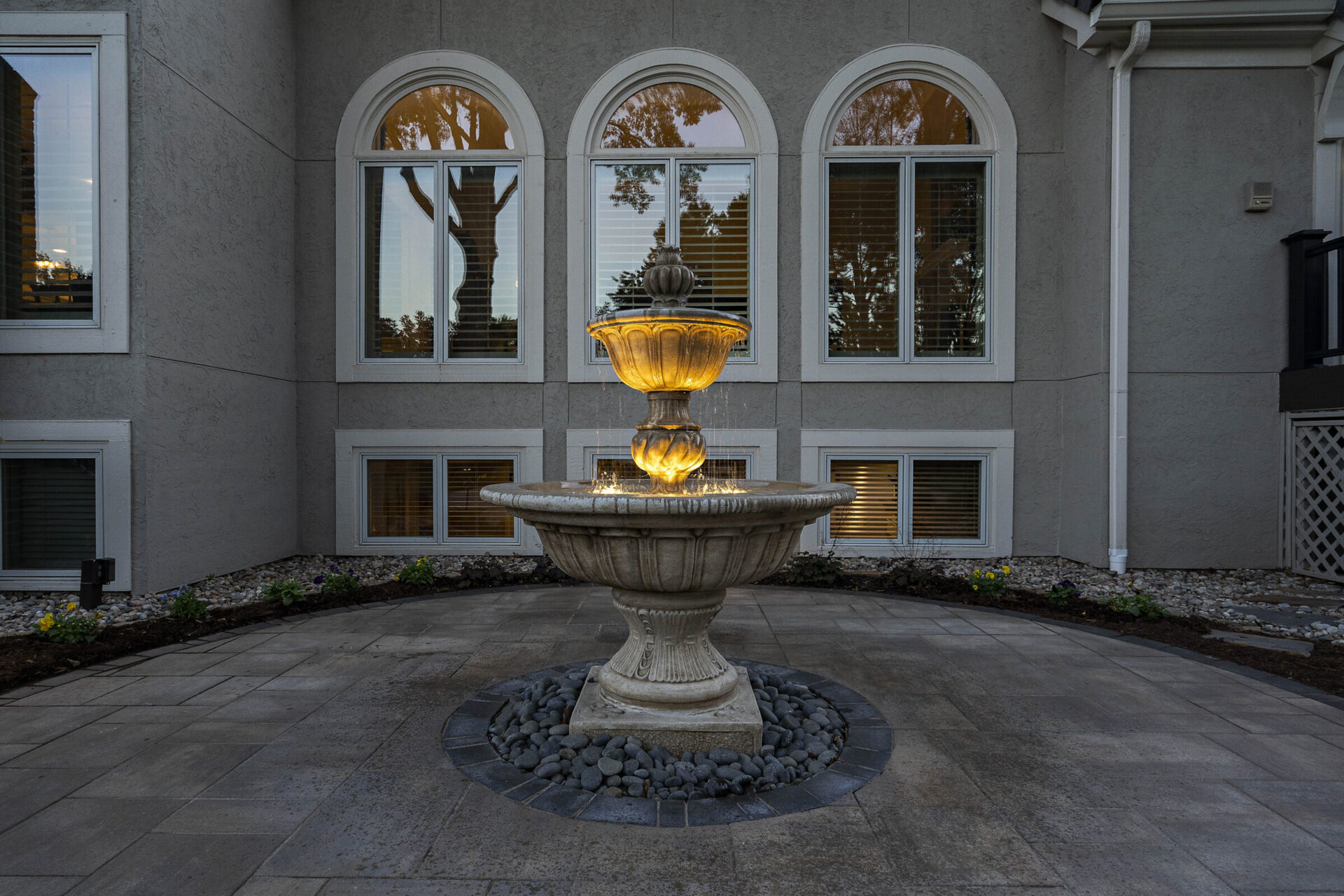
Choosing the Right Water Feature
- Size and Scale: Ensure the water feature is proportionate to the size of your yard. A feature that is too large can overwhelm the space, while one that is too small may not have the desired impact.
- Maintenance: Consider the upkeep required and choose a feature that fits your lifestyle. Some water features require more maintenance than others, so be sure to choose one that you can manage comfortably.
- Location: Place the water feature where it can be enjoyed from multiple vantage points, such as a patio or window. This ensures that you can enjoy the sight and sound of the water from both inside and outside your home.
How to Choose the Right Landscaping Idea for Your Yard
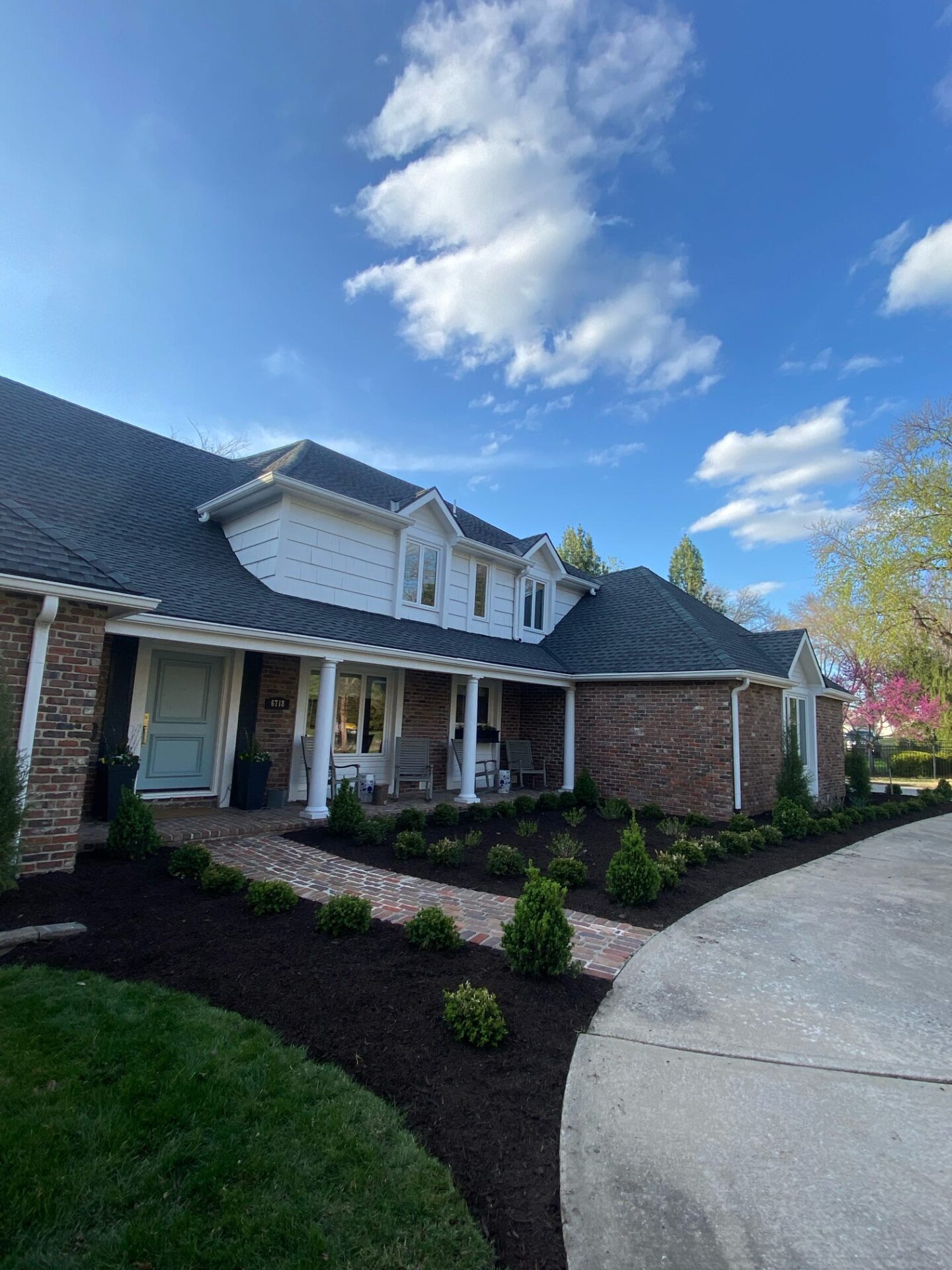
Not every yard is the same—and not every landscaping idea will suit your space, style, or lifestyle. Choosing the right approach starts with understanding your property’s unique features and your personal goals. Whether you want a peaceful retreat, a bold statement, or simply less yard work, the best front yard design is the one that works for you.
Here’s how to make the right choice:
1. Start with Your Yard’s Conditions
Every successful landscape starts with evaluating what you’re working with.
Ask yourself:
- How much sunlight does my front yard get each day?
- How well does the area drain?
- Does water pool in certain areas after rain?
These factors help determine which plants will thrive and whether you should focus on drainage, shade solutions, or hardy, drought-tolerant varieties.
2. Know Your Priorities
What do you want your front yard to achieve?
- Low-maintenance design: Native plant gardens, mulch beds, or stone pathways
- Curb appeal boost: Seasonal flower beds, lighting, or architectural focal points
- Eco-friendly features: Rain gardens, pollinator-friendly plants, or reduced maintenance.
- Family-friendly space: Wide walkways, safe lighting, or soft planting areas
3. Match Your Home’s Style
A cohesive landscape design isn’t just about plants and pathways—it’s also about architectural harmony. The exterior of your home sets the tone for your landscaping, and your front yard should feel like a natural extension of its design. For example, a modern home with clean lines and bold materials will pair beautifully with minimalist plantings, symmetrical layouts, and a curated lighting scheme. On the other hand, a traditional colonial or craftsman-style home calls for softer textures, natural stone, and classic garden beds that echo its timeless appeal.
Even the color of your home plays a role. Warm-colored homes might benefit from cooler-toned plants and hardscapes for contrast, while cooler-toned facades can be brightened with vibrant blooms or warm wood accents. The goal isn’t to match everything exactly—but to create visual balance between your home’s architecture and the landscape that surrounds it.
4. Think About Maintenance
It’s easy to fall in love with a beautiful design idea, but it’s just as important to consider how much time and energy you’re willing—or able—to invest in maintaining it. Some homeowners love spending weekends gardening, while others want a front yard that essentially takes care of itself. There’s no right answer, but being honest about your maintenance threshold will help you avoid frustration later on.
If you have a busy schedule or simply prefer a more hands-off approach, stick to hardy native plants, automated irrigation systems, and simple layouts with mulch or ground cover to reduce weeds. If you enjoy seasonal planting and don’t mind occasional upkeep, you might enjoy more dynamic flower beds, decorative grasses, or even a small water feature to enhance the atmosphere. Maintenance isn’t just about effort—it’s also about sustainability and long-term enjoyment, so plan accordingly.
Bonus Tip: Think Long-Term
A beautiful yard today is great—but a well-planned yard that grows better over time is even better. As you plan your front yard design, think about how the space will evolve over the next 5–10 years. Will your trees provide enough shade or too much? Will your plant beds overcrowd your walkway as they mature? Designing with the future in mind helps ensure your landscape looks good not just on installation day—but for many seasons to come.
Frequently Asked Questions About Front Yard Landscaping
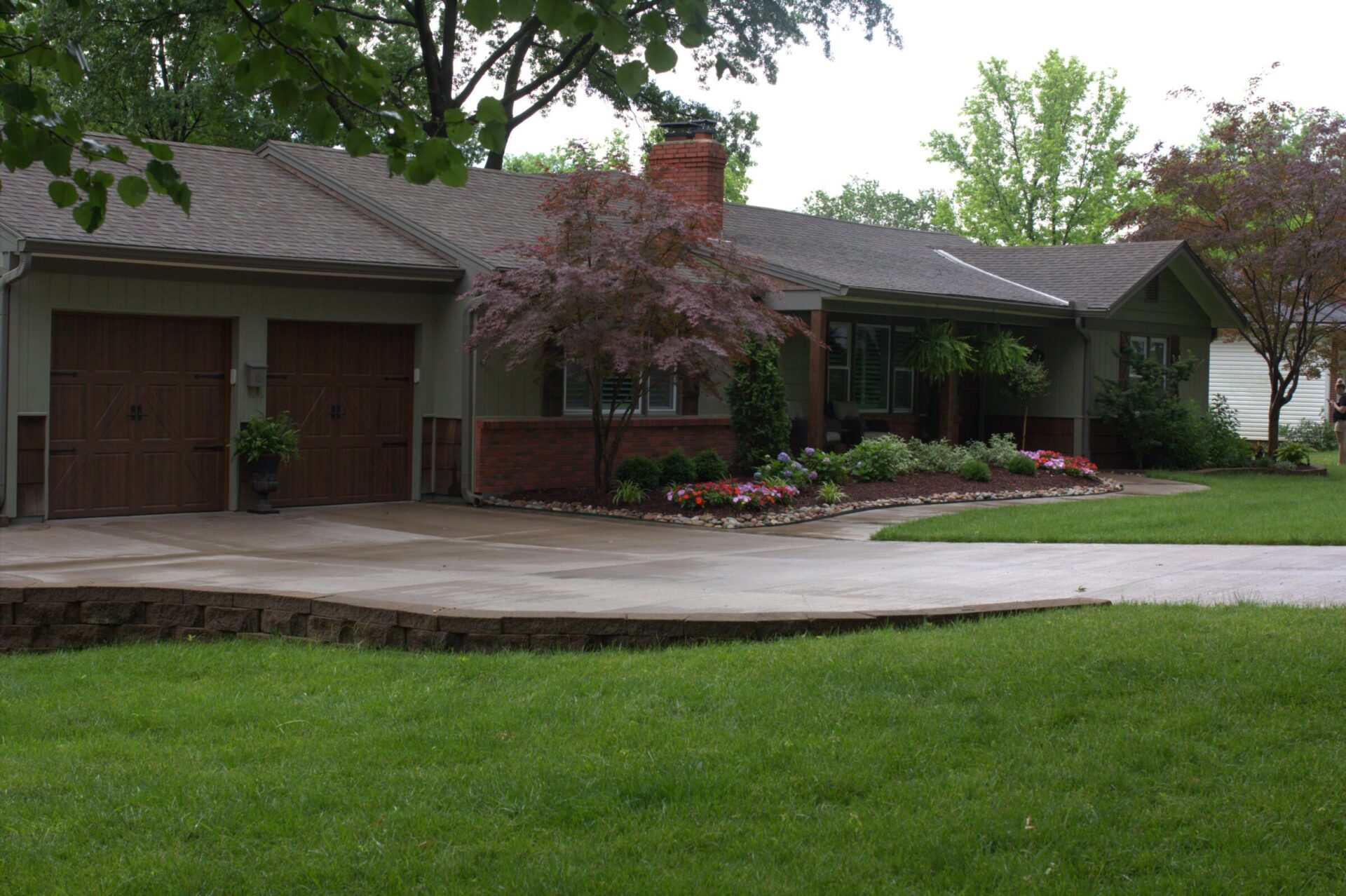
Planning a front yard refresh comes with plenty of questions. Here are answers to some of the most common landscaping questions we hear from Johnson County homeowners:
When is the best time to start front yard landscaping in Kansas?
Spring and early fall are ideal.
Spring offers the perfect growing conditions for planting and establishing new roots.
Early fall provides cooler temperatures and less evaporation, which is great for installing hardscapes and planting perennials.
What are the most low-maintenance plants for Johnson County?
Native plants are your best bet for minimal upkeep. Consider:
- Purple coneflower
- Switchgrass
- Black-eyed Susan
- Little bluestem
These plants are well-adapted to local conditions and require less watering, fertilizing, and fuss.
How much does front yard landscaping cost?
It depends on the size of your yard and the scope of work.
Tip: Start with one focal area and expand your design in phases if needed.
Can landscaping really increase my home’s value?
Yes, especially when it improves curb appeal and functionality. Studies show that well-planned landscaping can add up to 10-15% to your home’s value. It’s one of the most cost-effective exterior investments you can make.
Conclusion
Enhancing your front yard doesn’t have to be a daunting task. With the right landscaping ideas and a bit of creativity, you can create a welcoming and beautiful outdoor space that elevates your home’s curb appeal. Thoughtful design can transform a plain front yard into a personal sanctuary that reflects your style and enhances your home’s overall aesthetic. In Johnson County, where the community values both aesthetic beauty and environmental sustainability, incorporating native plants, well-designed pathways, outdoor lighting, colorful flower beds, and a soothing water feature can transform your front yard into a picturesque retreat. These elements not only add beauty but also contribute to a more sustainable and environmentally friendly landscape. Whether you’re a seasoned gardener or a novice, these ideas can serve as inspiration for your next landscaping project. So, roll up your sleeves and start planning the front yard of your dreams by requesting a quote today! Remember, your front yard is more than just the space in front of your home, it’s the first impression you make and a reflection of your personal style.
Tags:

